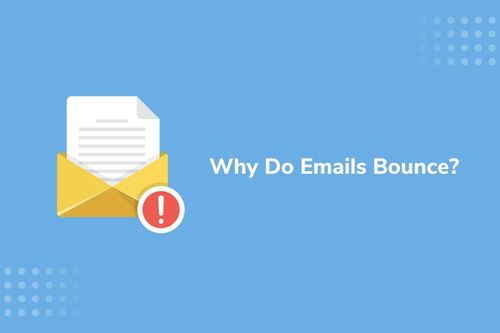Are you frustrated with temporary email bounces? Do you want to understand the difference between a hard bounce and a soft bounce? Look no further! In this comprehensive guide, we will walk you through the concept of temporary email bounces, their types, and how to handle them effectively.
What are Temporary Email Bounces?
Temporary email bounces occur when an email fails to reach its intended recipient temporarily. It means that the email was not delivered successfully at that particular moment, but there is still a chance for it to be delivered in the future. Temporary bounces can happen due to various reasons, such as a full mailbox, server issues, or the recipient's email server being temporarily unavailable.
Understanding the Difference: Hard Bounce vs. Soft Bounce
When it comes to email bounces, it is essential to differentiate between hard bounces and soft bounces. Let's explore each type:
1. Hard Bounce: A hard bounce is a permanent delivery failure. It occurs when an email cannot be delivered to the recipient due to a permanent issue. Common causes of hard bounces include invalid or non-existent email addresses, domain name errors, or the recipient's email server rejecting the email. Hard bounces indicate that further delivery attempts will not be successful and often result in the email being removed from the recipient's mailing list.
2. Soft Bounce: A soft bounce is a temporary delivery failure. It occurs when an email cannot be delivered to the recipient at a particular moment, but there is still a chance for successful delivery in the future. Soft bounces are usually caused by temporary issues, such as a full mailbox, a server being temporarily down, or the email exceeding the recipient's size limit. Email service providers typically retry soft bounces for a certain period before classifying them as hard bounces.
Handling Temporary Bounces Effectively
Now that you understand the difference between hard bounces and soft bounces, let's explore some strategies for handling temporary email bounces effectively:
1. Monitor Bounce Rates: Keep a close eye on your bounce rates to identify any significant changes or patterns. High bounce rates may indicate underlying issues that need attention, such as outdated email lists or incorrect recipient information.
2. Regularly Clean Your Email List: Regularly clean your email list by removing invalid or inactive email addresses. This practice ensures that you maintain a healthy sender reputation and improve deliverability rates.
3. Use Double Opt-In: Implement a double opt-in process to verify the validity of email addresses. This helps prevent fake or mistyped email addresses from entering your mailing list and reduces the likelihood of hard bounces.
4. Segment Your Email Lists: Segmenting your email lists allows you to send targeted and relevant content to specific groups of recipients. By tailoring your emails to the interests and preferences of your audience, you can reduce the likelihood of receiving soft bounces.
5. Monitor SMTP Bounce Codes: Pay attention to the SMTP bounce codes provided in bounce notifications. These codes provide valuable information about the reason for the bounce and can help you troubleshoot and resolve the issue effectively.
Frequently Asked Questions (FAQs)
Q1: How can I reduce the number of temporary email bounces?
A1: To reduce temporary email bounces, ensure your email list is up to date, regularly clean invalid addresses, and segment your lists for targeted communication. Additionally, monitor bounce rates and investigate any significant changes or patterns.
Q2: What should I do if I receive a hard bounce?
A2: If you receive a hard bounce, it is best to remove the email address from your mailing list. Continued delivery attempts to hard bounced addresses can harm your sender reputation and deliverability rates.
Q3: Can temporary bounces affect my sender reputation?
A3: While temporary bounces themselves do not have a significant impact on your sender reputation, consistently high bounce rates can negatively affect your reputation. It is crucial to monitor and address any underlying issues causing temporary bounces to maintain a healthy sender reputation.
Now that you have a comprehensive understanding of temporary email bounces, you can effectively manage and improve the deliverability of your email campaigns. By implementing best practices and monitoring bounce rates, you can ensure that your emails reach their intended recipients without any hindrances.



